A Business Concept Proposal is a structured document that outlines the core idea of a business or project, its goals, target audience, and how it intends to solve a…
continue reading
20+ Sample Landscaping Proposal
-
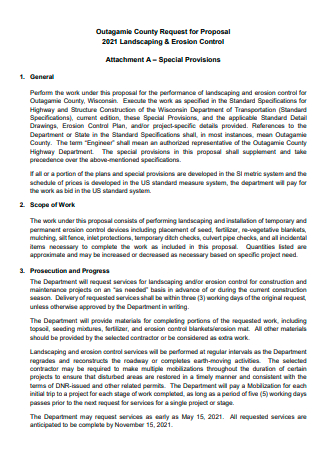
Landscaping and Erosion Control Proposal
download now -

Community Library Landscaping Proposal
download now -

Landscaping Proposal Form
download now -

Landscaping Request For Proposal
download now -
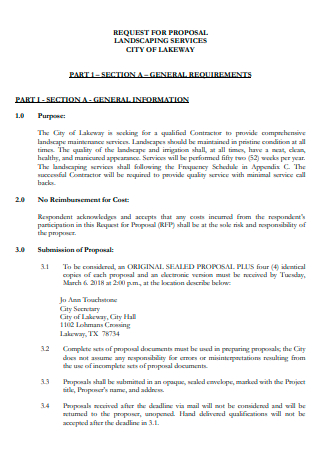
Landscaping Services Proposal
download now -

Landscaping Project Proposal
download now -
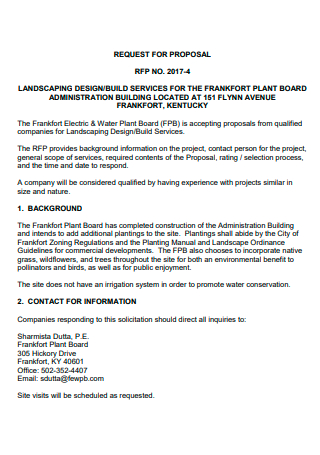
Landscaping Design Proposal
download now -
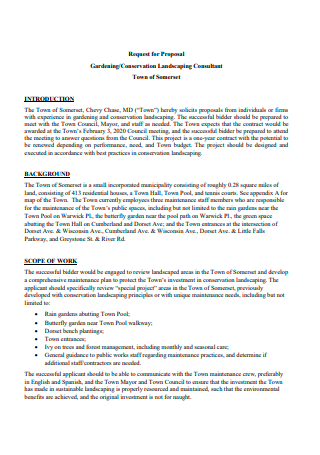
Conservation Landscaping Consultant Proposal
download now -
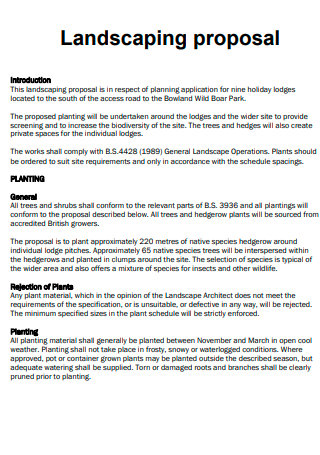
Landscaping Proposal Example
download now -
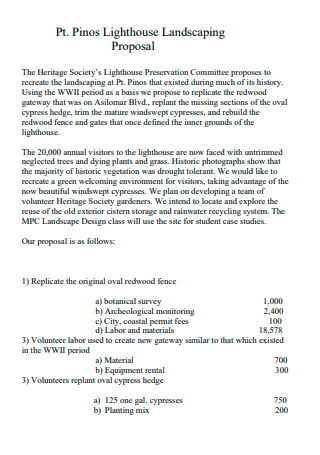
Light House Landscaping Proposal
download now -
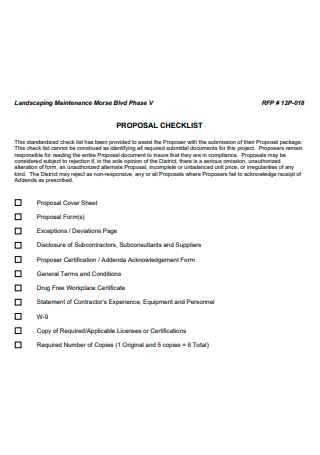
Landscaping Maintenance Proposal Checklist
download now -
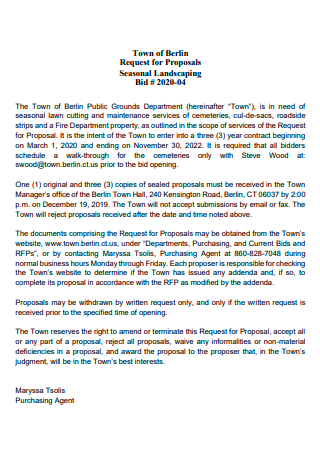
Seasonal Landscaping Proposal
download now -
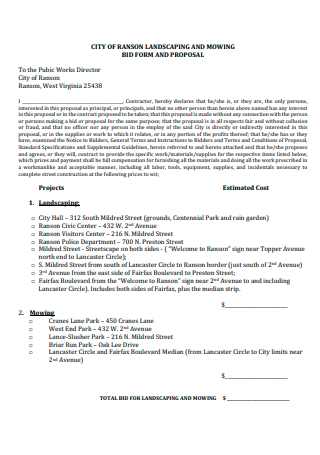
Landscaping Bid Form and Proposal
download now -
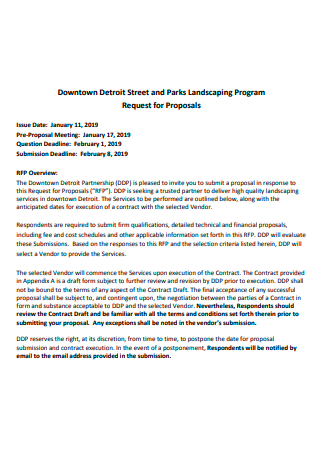
Landscaping Program Proposal
download now -

Landscaping Consulting Services Proposal
download now -
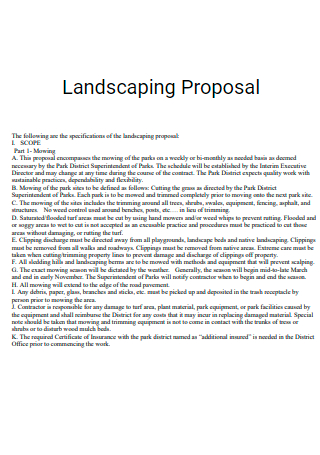
Landscaping Proposal in PDF
download now -
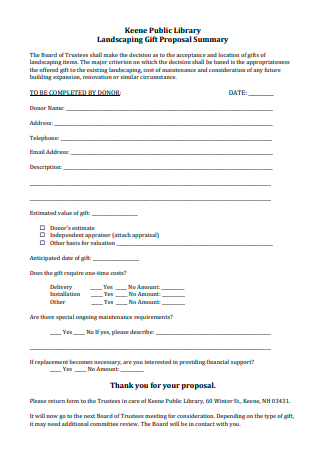
Landscaping Gift Proposal Summary
download now -
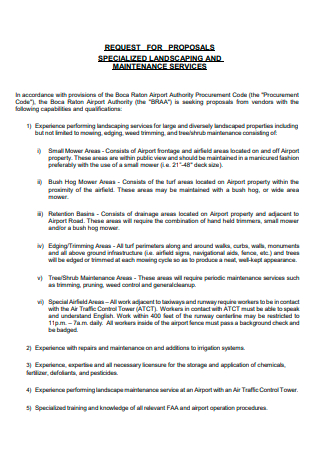
Landscaping and Maintenance Services Proposal
download now -
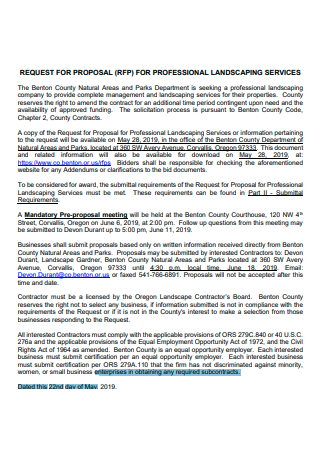
Professional Landscaping Services Proposal
download now -
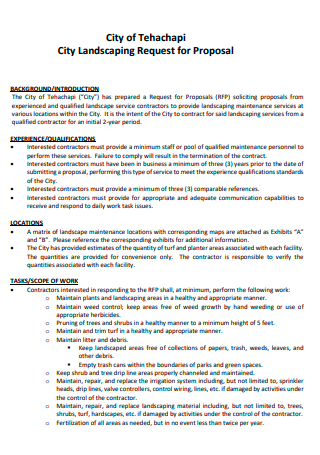
Standard Landscaping Proposal
download now -
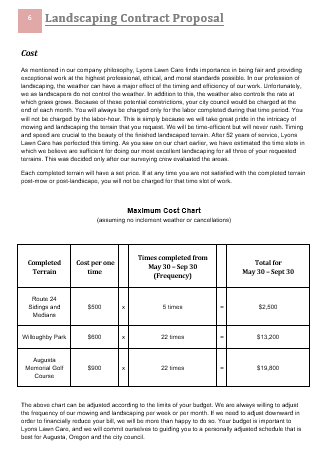
Landscaping Contract Proposal
download now
What Is a Landscaping Proposal?
Landscaping businesses and gardeners use Landscape Proposals to figure out the price of a landscaping job. The major goal of landscaping is to create a happy atmosphere around the building and provide healthy air, a pleasing look, and natural beauty to the tenants. Landscaping improves a building’s visual appeal. It comprises the design of the area outside or around a structure or building. You can fill out the accompanying form with the pricing and client details for each landscaping service with ease and few hassles if you utilize the landscaping proposal template provided.
Reasons Why Landscaping Is Important
Landscaping is the process of bringing trees and other plants into an area to create a beautiful environment, whether it’s in a peaceful neighborhood or a bustling city. Amazing landscaping projects, such as rooftop gardens, urban pocket parks, and backyard oases, can now be found all over the world. Before we dig into the process of writing a landscaping proposal, you should first be aware of the considerable reasons as to why landscaping is important to include in your planning to develop your client’s property. Your client may not be fully convinced to properly require the landscaping services and so these reasons can showcase how essential landscaping is.
Things to Consider When Planning Your Landscape Design
There are certain crucial elements to consider before you begin planting, whether you are entirely remodeling your landscape or simply making a few tweaks. While many people rush to their local gardening supply store to peruse the possibilities, making a plan ahead of time can help you choose plants that will meet your needs and thrive in your environment. It’s easy to get enticed into purchasing plants that appear lovely in the store, only to discover later that they are inappropriate for your setting. These things will assist you in developing a strategy and getting started on the path to a beautiful, unified, and healthy landscape.
How to Write a Landscaping Proposal
A Proposal for landscaping services has evolved from a simple one-page invoice with a place to sign the approval or agreement at the bottom to a more professional presentation. Landscape proposals are now more than just a list of services and prices. They are an opportunity for companies to convey their unique features and demonstrate why they are the ideal company for the project. While some businesses still choose to utilize a one-pager, the truth is that if you are not providing a professional landscaping proposal, your rivals are more likely doing so. Avoid being overshadowed and go through the guide to impress your clients.
-
Step 1: Prepare a Cover Letter
A Cover Letter should be placed on the first page of your document; it will serve as a pleasant introduction to the client. An intriguing cover letter might make the difference between getting noticed by a client and getting lost in a sea of applicants. Review the landscaping cover letter sample and extra tips for guidance on creating a document that successfully offers your unique talents and experience. Keep in mind to utilize numbers. This information puts your expertise in context and broadens your appeal as a possible worker. Avoid stalling; instead, go right to the point and don’t waste the reader’s time.
-
Step 2: State Information About Your Services
You might simply incorporate a company Brochure to easily present your landscaping suggestions. However, it is a sloppy method and there are various other means to present professional solutions for disseminating information about your company. The landscaper and client will refer to this section for information on any aspects of a project, from milestones to payment timelines to contract-specific criteria. Since the services contain vital information about what you can provide them, they must be written to be as precise, clear, and comprehensive as possible. Weekly, monthly, quarterly, semi-annually, and as needed are possible frequencies that clients may employ your services with regards to landscaping their respective properties.
-
Step 3: Include a Visual Representation
When possible, provide a CAD drawing, image, or depiction of the landscape project in your landscaping proposal. It not only aids in displaying your recommended space solution but also raises your chances of being hired for the task. This is because a visual rendering may help the buyer emotionally connect with the project. It will also be a reflection of your competence and professionalism. A visual depiction of the project also aids in your customer’s understanding of your concept. Many clients will lack the industry knowledge to know how big a certain kind of tree will grow or would struggle to visualize your raised flower bed planting strategy.
-
Step 4: Add a Landscape Bid
One of the most significant aspects of your landscape proposal is the bid. This should display the client line-by-line expenses for materials, labor, equipment, and any additional charges. It should also provide them with the final bid amount and any reductions that were offered. You should be meticulous and transparent in this section to present to your potential clients the breakdown of the amount they are paying you. As well as provide a reason to them how and why these are the prices you have stated. Don’t undermine your skills and capabilities, be confident and set a price that is fitting for your services.
-
Step 5: Prepare a Contract
This is the last step for the landscaping proposal. Any agreement needs to be legalized and the proof of such can be physically shown through a contract. The contract is a crucial component of the deal’s efficiency. This helps the customer to proceed from reviewing the proposal to authorizing the project as quickly as possible. The last thing you want is to acquire a verbal clearance just to have a rival come in and win the business before you can turn over the official documentation. Thus, you will be needing a Landscape Contract at the end of your proposal. Feel free to peruse the available landscaping contract template this site has to offer.
-
Step 6: Double Check Each Detail
The landscape business should double-check every aspect of the plan, including the cost of all materials as well as labor, before submitting it. The pricing of the services should be in line with the company’s financial goals. People will pay for high-quality work to ensure a good quality of service. Another thing to consider is customer service. Customers’ positive and negative testimonials may be found on the Internet for every landscaping company. To protect the company’s credibility, you should stick to all the commitments you made in the proposal and not modify costs or timelines at the last minute.
FAQs
What can you add to the landscaping proposal?
Provide testimonials from clients who have had great experiences working with you from previous projects. Customer testimonials will help to encourage your prospective client to choose your services and your landscape company. Since we live in a testimonial-obsessed era, posting favorable client evaluations upfront may help your business shine. It is not necessary to include that in your proposal on Landscaping but it will help your clients to see how trustworthy your company is and how your services will be beneficial to them.
What is the best way to estimate the cost of landscaping?
Landscapers often charge between $50 and $100 per hour. The cost of a task is determined by the size of the job and the number of landscapers required. It takes a two-person staff 30 minutes to trim your grass for conventional lawn care, which works up to around $100 per hour. Other factors can shift the estimated cost of landscaping such as the location, how large the area is, and the required services from a simple trim to a full-blown transformation.
What qualifications should a landscaper possess?
These landscaping skills and qualifications are some that you will necessarily have to set you apart from your competition. Some examples include watering system installation, operation, lawn seeding, sodding, and maintenance. Lastly, hedges, trees, and shrubs will be pruned and trimmed so knowing the appropriate tools to use is important. You should also be knowledgeable to detect plant diseases and pest infestations.
You have reached the end of the article and are sufficiently filled with the knowledge to write a Landscaping Project Proposal suited for your client’s preferences and specifications. Remember that an available sample lawn care proposal letter is found throughout the site which you can benefit from to cut time spent on creating these documents when instead you can prioritize other tasks.
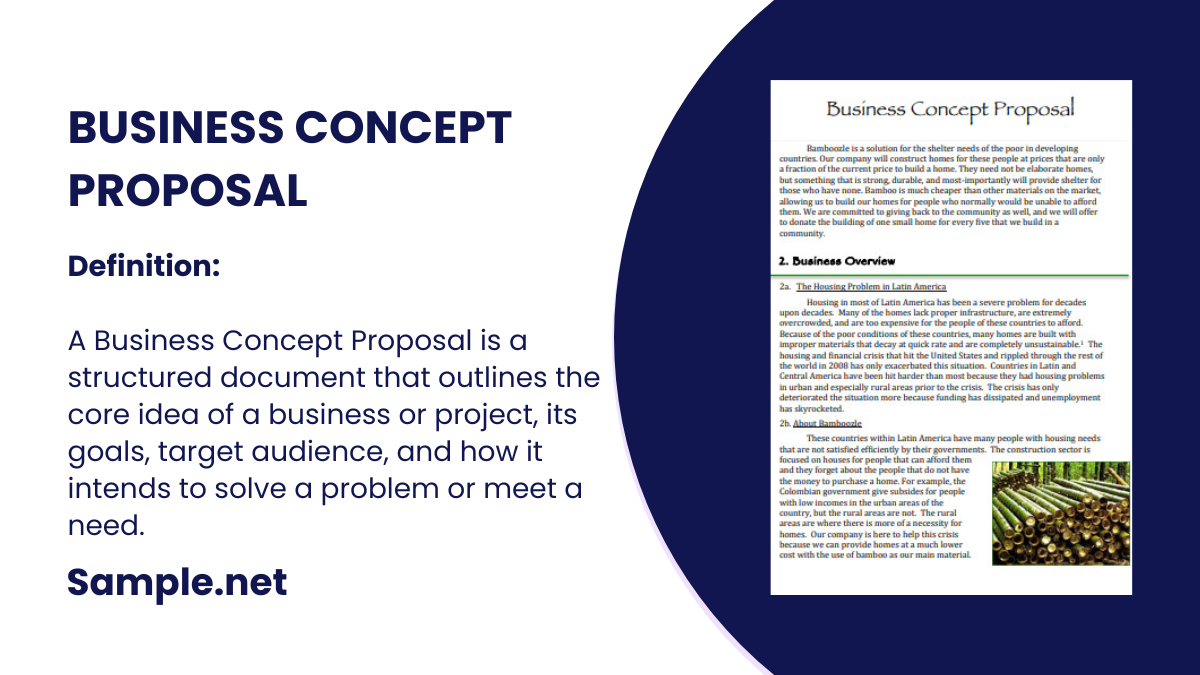
![25+ SAMPLE Marketing Budgets [ Business, Plan, Digital ] marketing budgets](https://images.sample.net/wp-content/uploads/2021/02/Marketing-Budgets.jpg)